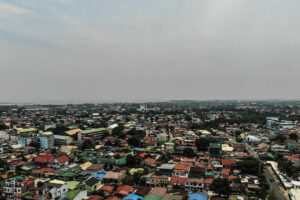‘BSP has room for 2 more rate cuts’
THE BANGKO SENTRAL ng Pilipinas (BSP) may have room for two more rate cuts this year, Metropolitan Bank & Trust Co. (Metrobank) said.

By Luisa Maria Jacinta C. Jocson, Reporter
THE BANGKO SENTRAL ng Pilipinas (BSP) may have room for two more rate cuts this year, Metropolitan Bank & Trust Co. (Metrobank) said.
“For now, we are holding on to our ‘2+1’ rate cut call (two cuts with a possibility of a third cut) for 2024, with up to 75 basis points (bps) worth of easing slated for early 2025,” Metrobank Chief Economist Nicholas Antonio T. Mapa said in a report.
“The main argument for rates to slip to 5% by mid-2025 lies in the outlook for growth and inflation,” he added.
The Monetary Board last week reduced the target reverse repurchase (RRP) rate by 25 bps to 6.25% from the over 17-year high of 6.5%. This was the first time that the central bank cut rates in nearly four years.
BSP Governor Eli M. Remolona, Jr. had also signaled the possibility of a 25-bp cut in the fourth quarter. The Monetary Board’s remaining meetings this year are on Oct. 17 and Dec. 19.
Metrobank expects the central bank to implement a “modest” easing cycle.
“Given the BSP’s forecasts pointing to inflation remaining within target all the way through to 2026, we believe that BSP has the price stability objective in hand for the moment,” Mr. Mapa said.
The BSP expects inflation to average 3.4% this year, 3.1% in 2025, and 3.2% in 2026. This would put full-year inflation settling within the central bank’s 2-4% target until 2026.
For his part, GlobalSource Partners country analyst and former BSP Deputy Governor Diwa C. Guinigundo said that the BSP’s inflation outlook supports further easing.
“This gives the BSP room to maneuver into a less restrictive monetary stance, lower cost of borrowing and stimulate credit and business activities,” he said in a Viber message.
“If between now and the next two meetings of the BSP for the rest of the year nothing changes in the balance of risks, there could be space for another rate cut and more in 2025.”
Mr. Mapa noted that the Monetary Board’s decision to cut rates also took economic growth into account.
“The move suggests that rates are not at ‘normal’ levels and that the restrictive stance would impose a toll on economic growth if kept at elevated levels for much longer,” he said.
Mr. Remolona had earlier said that the previous 6.5% key rate was “tight.”
“Tight policy rates may have been imperative when inflation was well-above the target, but with inflation on the downtrend, it appeared that tight policy was no longer the right prescription for a growing economy,” Mr. Mapa said.
The Philippine economy expanded by 6.3% in the second quarter, faster than 5.8% in the previous quarter and 4.3% a year ago. On a seasonally adjusted quarter-on-quarter basis, gross domestic product (GDP) expanded by 0.5%, slowing from 1.1% in the first quarter.
“Barring any supply-side shocks, the BSP appears to have more than enough room to engineer a ‘soft takeoff’ for the Philippine investment sector, which for the most part has been operating at a very measured pace,” Mr. Mapa said.
“The latest GDP growth numbers plus the BSP’s own forecasts pointing to growth staying below 6% this year and the next suggest that the BSP does have scope to ease off the brake pedal and shift to the accelerator at a ‘measured pace.’”
Meanwhile, Mr. Mapa said the BSP may continue its easing cycle once the Fed begins cutting rates.
“If inflation remains well-behaved, the Fed proceeds with three rate cuts and growth remains constrained, we could see BSP cutting rates by another 50 bps before the end of the year.”
However, Mr. Guinigundo said that the BSP must still be wary of the Fed’s moves.
“I would rather have the BSP shift to a less restrictive monetary policy after the US Fed’s expected easing,” he said.
“This would help mitigate the risk of capital outflow should the interest rate differential moves in favor of dollar-denominated assets. Additional price pressures might be triggered by a weak peso.”
The focus this week will be on Federal Reserve Chair Jerome H. Powell’s speech in Jackson Hole as investors look for cues on whether the Fed will start with a 25-bp or 50-bp cut in September.
“I do maintain that patience continues to be relevant in future monetary policy discussion because the real sector remains robust and the labor market generally firm,” Mr. Guinigundo said.
“The tight monetary policy has succeeded in stabilizing inflation without dislodging the anchors of economic growth,” he added.























